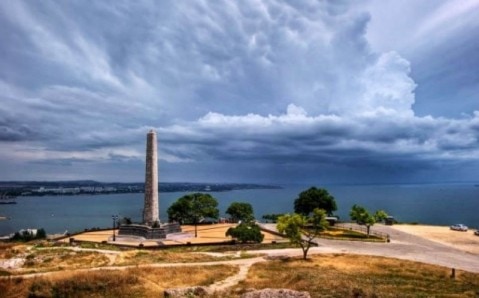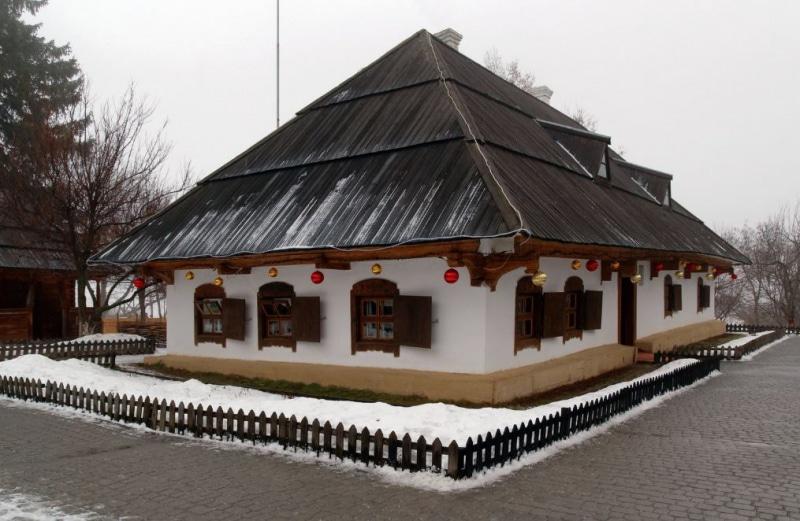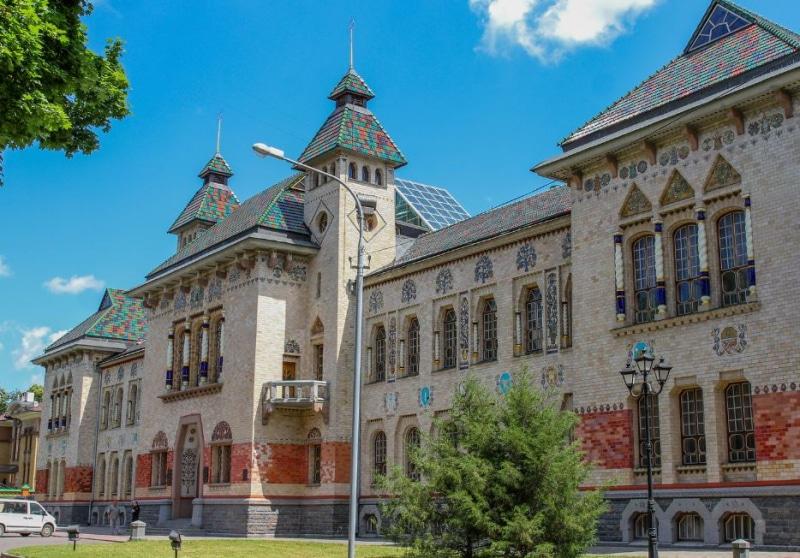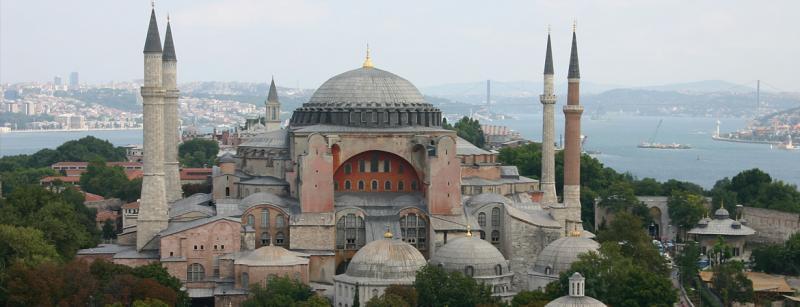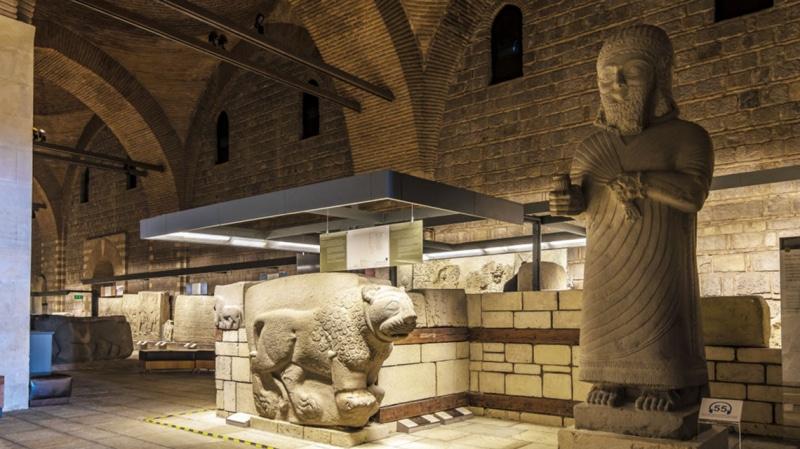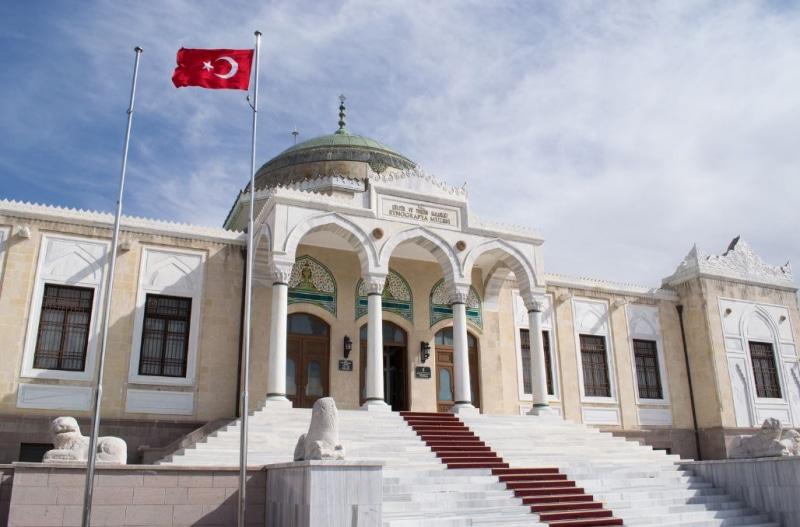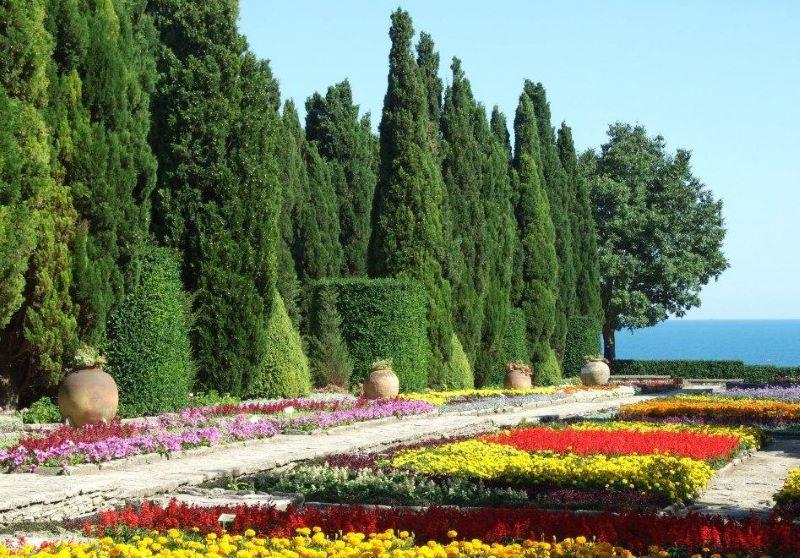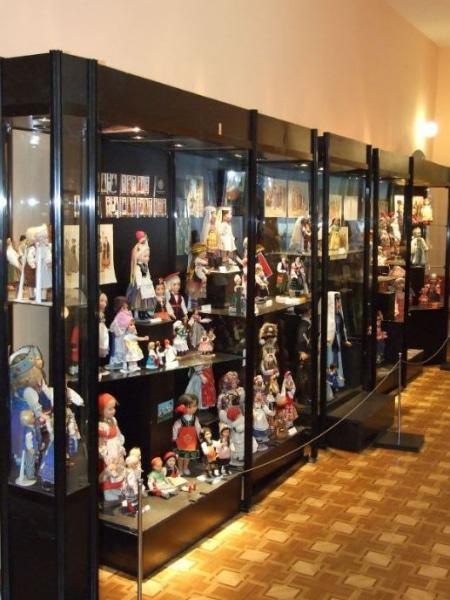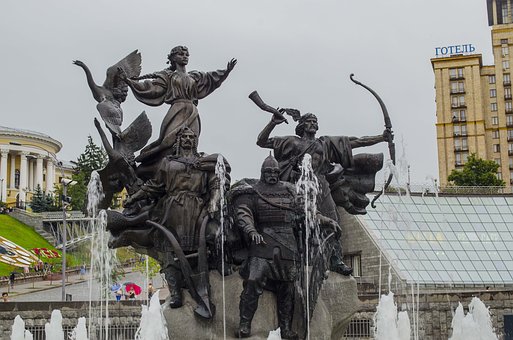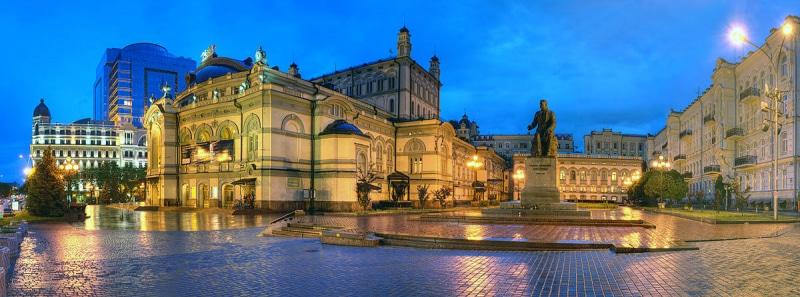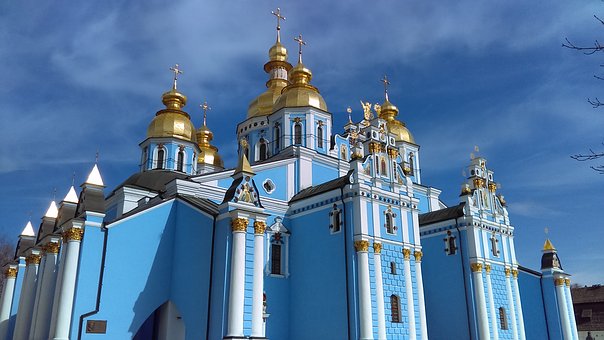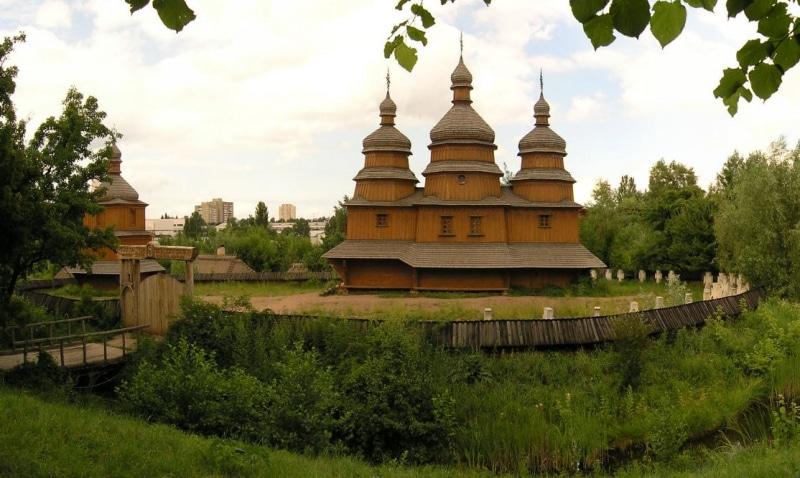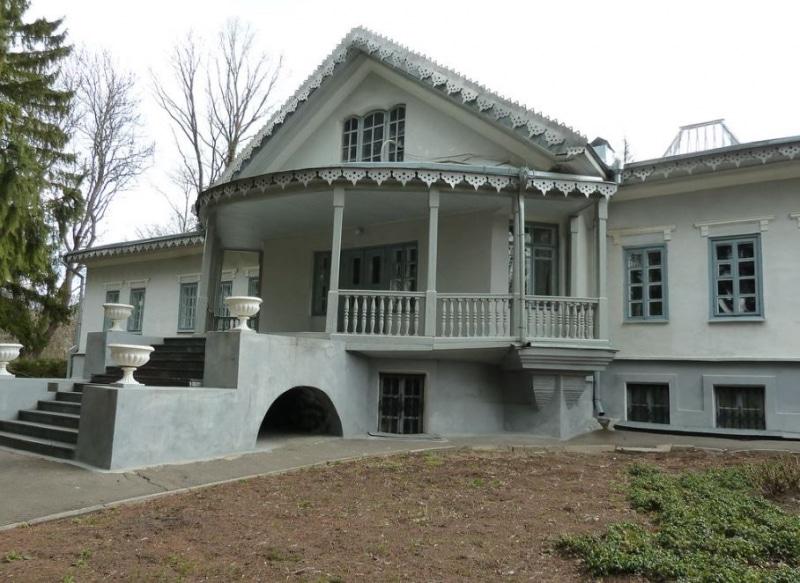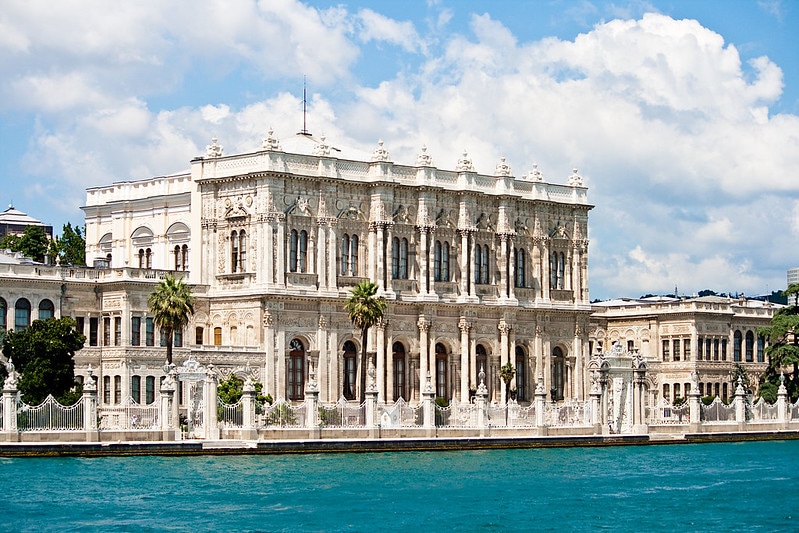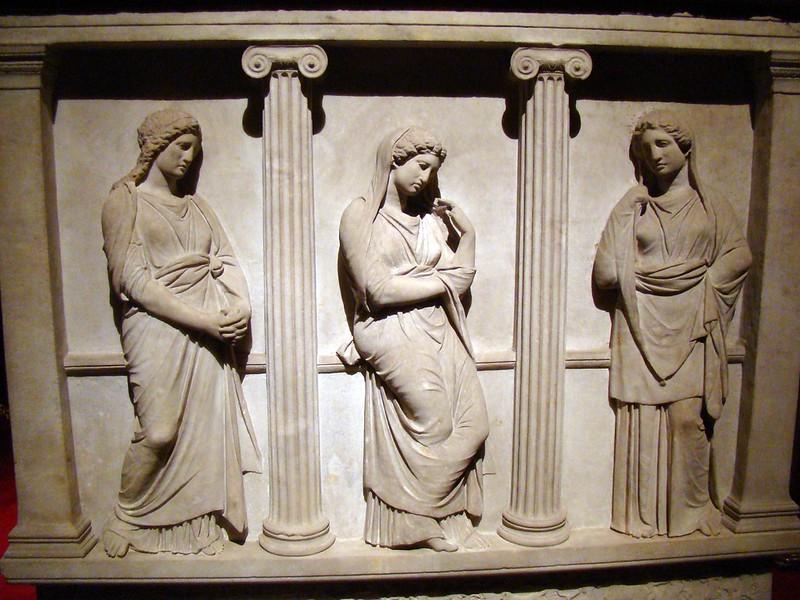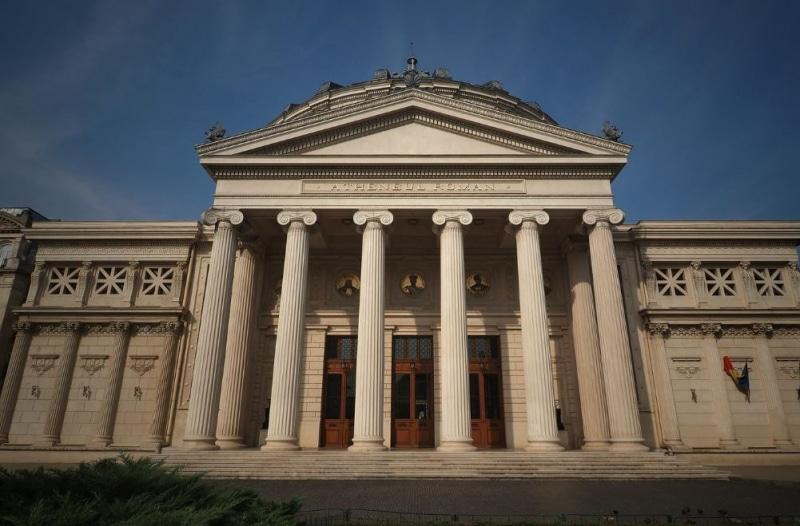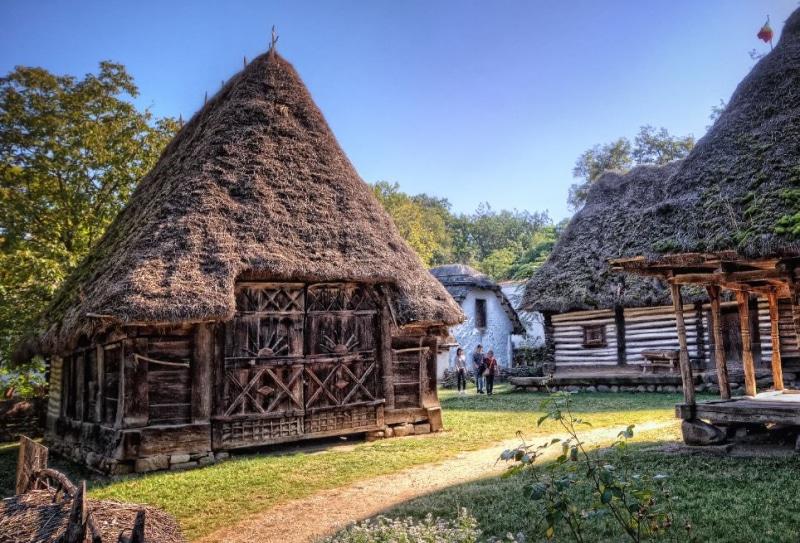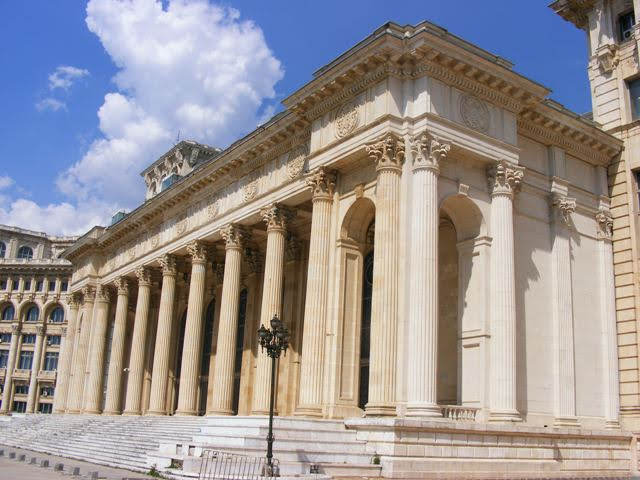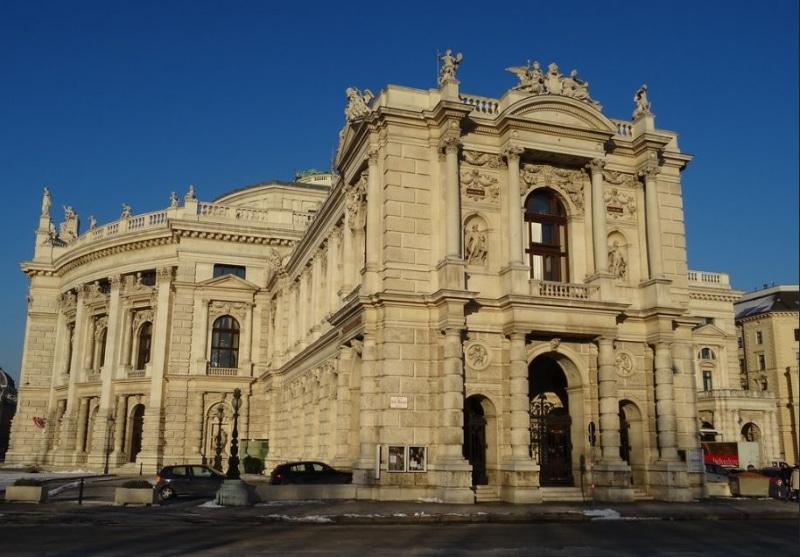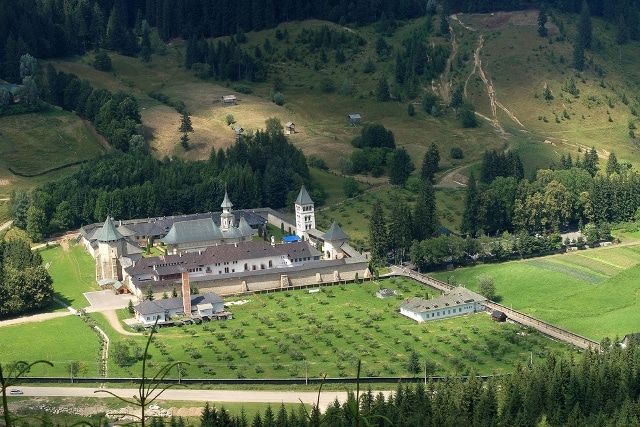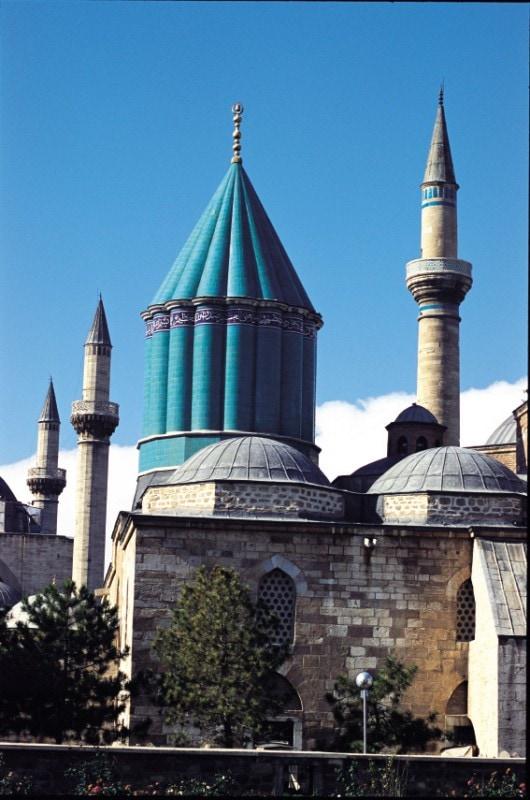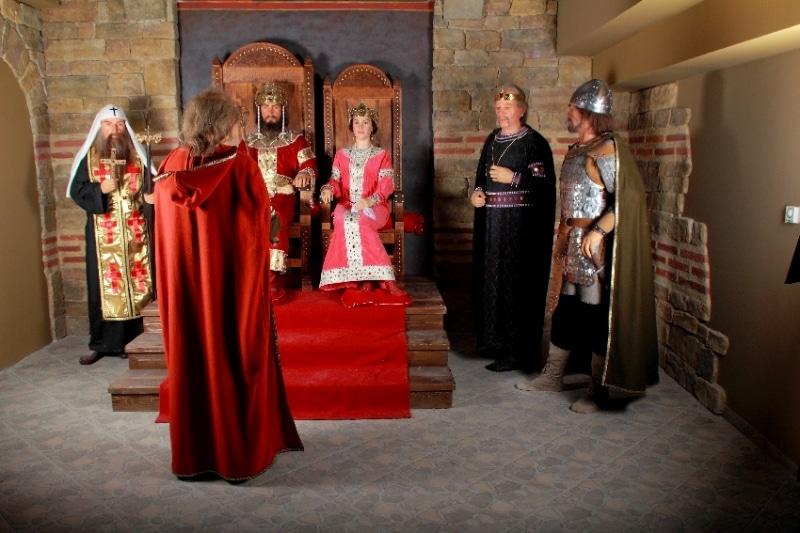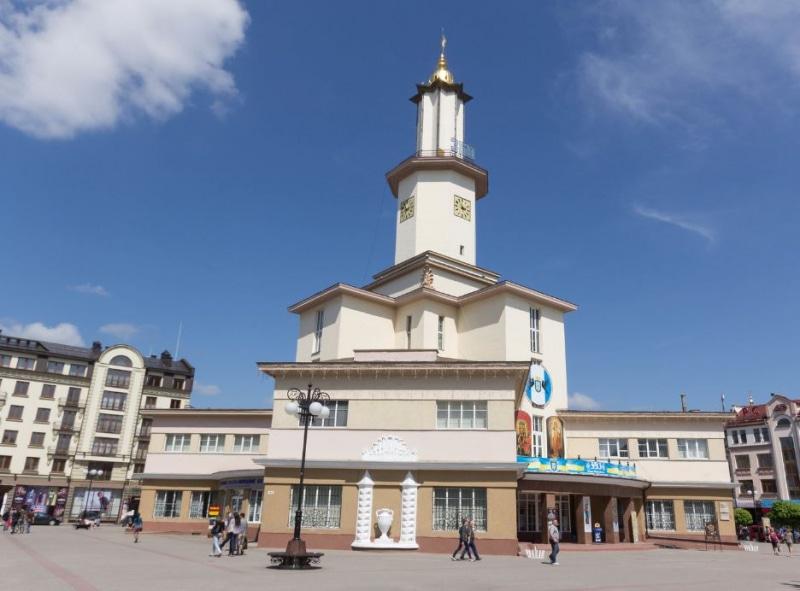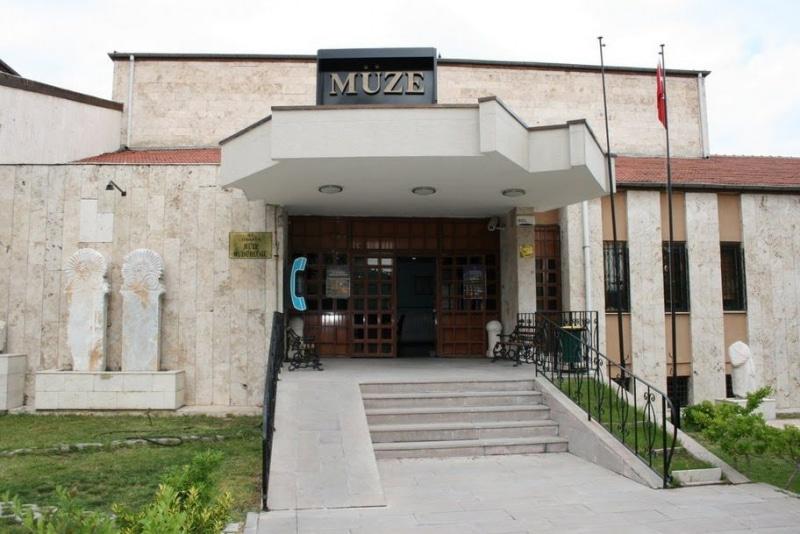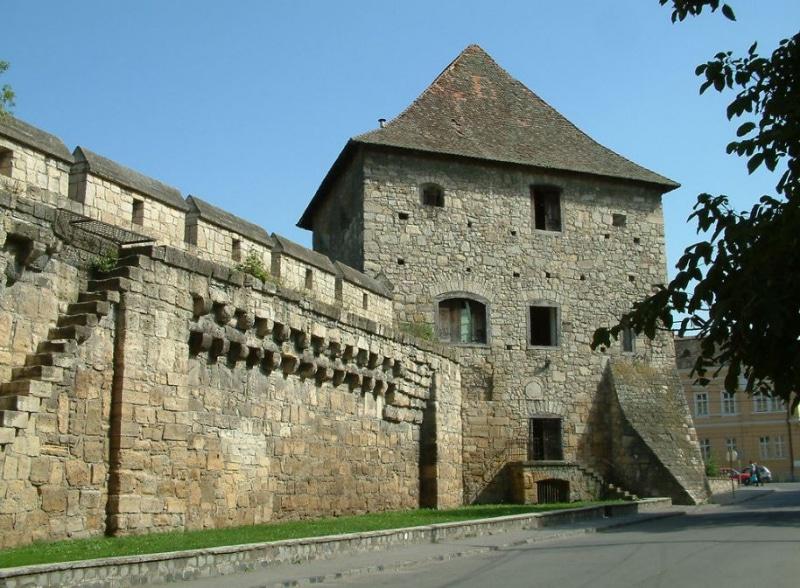ArtandCulture, Kerch
Removed from Unnamed collection
Mount Mithridat
Mount Mithridat towers above the town for almost one hundred meters and is rightly considered to be Kerch’s main tourist attraction and its imperishable symbol. Different historical and cultural epochs interweaved in this wonderful place and left their landmarks in form of unique monuments on the mountain's slopes and at its foot. https://discover-ukraine.info/places/crimea/kerch/594
Map
Explore more places related to this search:
Removed from Unnamed collection
Museum-Mansion of Ivan Kotliarevsky
A lot of sights in Poltava are connected with the name of the classical Ukrainian writer and dramatist Ivan Kotliarevsky who lived the greater part of his life and created his most famous works here - among them the prominent poem 'Aeneid'. His Museum-Mansion at the town's historical center near the Assumption Cathedral is one of Poltava's most picturesque and most visited sights.
The real mansion, where the prominent writer lived and worked didn't survive. In 1969, however - to Kotliarevsky's 200th anniversary - it was reconstructed upon watercolour sketches by another Ukrainian classical writer - Taras Shevchenko. The memorial complex, fenced with flower-twined paling, consists of a dwelling house - the typical Ukrainian hut from the 18h century - warehouse and well with a sweep.
Fragments and details of Ivan Kotliarevsky's old house were embedded in the recreated mansion. Thanks to the recollections of writer's contemporaries, the Museum-Mansion's interior was renewed as accurate as possible. Kotliarevsky's personal belongings, awards, manuscripts and everyday knickknacks from the 18th - early 19th centuries are kept here. https://discover-ukraine.info/places/eastern-ukraine/poltava/622
Map
Removed from Unnamed collection
Poltava Local History Museum
Poltava Local History Museum is one of the oldest and the most interesting museums in Ukraine. It houses a unique collection of authentic items and antiquities that introduce the history, nature and culture of Poltava region, as well as true treasures of the world history, including artefacts from Ancient Egypt, India, China and Japan. The museum is reckoned among the most visited ones in the city: yearly, about half a million Poltava locals and guests visit its original expositions.
The Local History Museum is situated in the building of the former province Zemstvo (elective district council in pre-revolutionary Russia) that was built in Ukrainian art nouveau style, in the early 20th century. Being recognized as an eminent architectural masterpiece, it is often called a stone flower, in which traditions of folk architecture, old Ukrainian ornaments and innovative designer forms interweave. https://discover-ukraine.info/places/eastern-ukraine/poltava/1390
Map
Removed from Unnamed collection
Hagia Sophia Museum
Hagia Sophia is the one of the most visited museums and most prominent monuments in the world in terms of art and the history of architecture. It has also been called “the eighth wonder of the world” by East Roman Philon as far back as the 6th century. http://ayasofyamuzesi.gov.tr/en/about-us
Map
Removed from Unnamed collection
Museum of Anatolian Civilizations
The Museum of Anatolian Civilizations, located in Ankara province of Turkey, is just like a gift for history lovers. This superb museum is the perfect introduction to the complex weave of Turkey's ancient past, with its beautiful artefacts picked from just the significant archaeological site in Anatolia.
Very few places in the world could give you a chronological understanding of mankind's mind-boggling progress. Anatolian Civilizations Museum in Ankara is one of them. Arranged as a chronological spiral, this museum will take you on a journey from 900 thousand years ago, to the present time.
The Museum of Anatolian Civilizations has on display priceless artefacts dating from the Paleolithic and Neolithic Ages and from Hittite, Phrygian, Urartu and Roman civilizations. https://www.goturkeytourism.com/things-to-do/anatolian-civilizations-museum-ankara.html
Map
Removed from Unnamed collection
Ethnography Museum of Ankara
Ethnography Museum of Ankara is the first museum of Turkish Rebuplic which was planned and built by the directive of Atatürk, the great leader. Arif Hikmet Koyunoğlu, the architect of the building, is one of the most valuable architects of the Republican period. The architecture of the Ethnography Museum of Ankara reflects the characteristics of each period of Anatolia from the early ages to the Republic. The Museum which was opened to the public on 18th July 1930 and remained open until the date on November 1938 where the inner courtyard of the museum served as the temporary grave for Atatürk. The Ethnographic Museum of Ankara reopened its doors to the public, owing to the International Museums week, in 6th-14th October 1956.
Ethnography Museum of Ankara contains a rich collection of works which reflect ethnographic aspects of all people lived in Anatolia At the museum, it is possible to see folk costumes, ornaments, Turkish-specific technical materials compiled from various regions of Anatolia as well as the finest examples of Ottoman calligraphic art, Turkish tile and glass art, metalworking art and wooden artefacts. Also exhibited at the Ethnography Museum is a collection of carpets and kilims from the famous carpet weaving centres of Uşak, Bergama, Kula, Milas, Ladik, Karaman, Niğde, and Kırşehir. The museum also has a specialized library on Anatolian ethnography and folklore, containing artefacts available related to the history of art. http://cagdasmuzebilim.ankara.edu.tr/en/ethnography-museum-of-ankara/
Map
Removed from Unnamed collection
Art Gallery Balchik
The Art gallery of Balchik was found in the thirties. At the beginning the gallery works together with the town museum. In 1961 a new museum collection was found. At the beginning there were only 76 works of art, donated by the National Art Gallery and by local people.
The nowadays art gallery was unveiled in 1987. It is settled in reconstructed former high school. The gallery occupies territory of 800 sq. meters. At the first floor there are four halls for temporary and visiting exhibitions and at the second floor there is constant exhibition. Nowadays the fund of the gallery is 1200 works. There can be seen all kind of paint art. Annually there are exhibitions, feasts. At the second floor, where is the constant exhibition, can be seen old and new Bulgarian art of painting and hall of graphic and sculpture. In this hall can be seen works from the “golden fund” of the Balchik Art gallery. Most of those works were exposed at the unveiling of the gallery. http://bgglobe.net/art-galleries/town-of-balchik/art-gallery--balchik-4988
Map
Removed from Unnamed collection
Park Kyivan Rus'
Spread out in Kyiv’s picturesque surroundings, the Culture and History Center ‘Park Kyivan Rus’ is a unique project in its nature and scale that has no analogues in Ukraine and even in Europe. It recreates architectural appearance and atmosphere of princely Kyiv with amazing accuracy, taking visitors on a time travel to the Middle Ages and bringing them in the very heart of one of the most influential states in Eastern Europe – the Old Rus.
It was decided to create the park exactly in this place for the reason that it is a historically important territory not far from the capital. It is mentioned in antique chronicles and its landscape is very close to the relief and vegetation of the Old Kyiv. The creators of the Culture and History Center brilliantly recreate the ensemble of the Kyiv stronghold – the historical core of the ancient city – as it looked under the rule of the Prince Vladimir the Great. It is from Kyiv kremlin (another name for the medieval stronghold) that the origin and development of Kyiv and the Old Rus started. Later it became the cradle of Slavic civilization. https://discover-ukraine.info/places/kyiv/kyiv/1527
Map
Removed from Unnamed collection
Balchik Palace & Botanical Garden
The palace and the botanical garden in Balchik, joined in an architectural and park complex, are a piece of heaven on earth and a must-see tourist attraction on the Bulgarian Black Sea coast. The complex appeared as a summer residence of the Romanian queen Maria (1875-1938).
The visitors to the palace and the botanical garden are especially interested in the chapel “Stella Maris”, the “Alley of wine”, the “Alley of ages”, the “Hanging terraces”, the tomb of Queen Maria, the “Garden of Allah”, the “English courthouse” garden, the “Garden of the cross-shaped water mirror”, the “Palace bridge and the boat garage”, the “Bridge of sighs”, the old mill, the “Silver well” and the numerous archaeological artifacts from antiquity and the Middle Ages. The palace is supplied with water from the springs “Byal Kladenets” and “Chatal chesma”. The villa where once the queen lived houses a museum exhibition, which displays her personal belongings, photographs and documents, as well as a collection of original paintings and icons; antique pottery found during archaeological excavations of Thracian mounds near Balchik and Revival Period weaponry. The hall that once served as the residence’s library is now a gallery. It displays paintings of Bulgarian and foreign artists. http://dobrudzha.com/en/57.html
Map
Removed from Unnamed collection
Museum of Toys
The Kyiv Toy Museum is a truly unique place, interesting for both, children and adults. For the first ones it is an opportunity to plunge into the fairy world, where hundreds of different heroes live, for the latter ones - a chance to feel nagging nostalgia, and at the same time to learn many interesting facts about the history of toys as an integral part of the country's culture.
The Toy Museum, opened in 2005, is one of the youngest in the capital. Nevertheless, its impressive collection numbering over 10 thousand exhibits exists over 80 years! It is based on the items that were gathered for the toy exhibition, which took place back in 1936. Today, the museum's exposition visually demonstrates the history of national toy production and is the vivid evidence that Ukraine rightly occupied the second place among the Soviet republics in volumes and quality of manufactured children toys.
Museum shelves are 'inhabited' by hundreds of different dolls and teddy animals, technical and construction toys, as well as a unique collection of board, printed games. Besides commercial items, museum funds include exclusive author's works by soviet puppet-makers and authentic collection of Ukrainian folk toys. https://discover-ukraine.info/places/kyiv/kyiv/955
Map
Removed from Unnamed collection
Khreshchatik street
The modern center with surviving parts of the old city are on the hilly west, or right bank, of the Dnipro River. The main street, Khreshchatik, runs between two steep hills. Parallel about half a kilometer west, is vulytsya Volodymyrska, the main street of the Old Kyiv area (Staryj Kyiv). http://www.traveltoukraine.org/kyiv.htm
Map
Removed from Unnamed collection
National Opera & Ballet Theater of Ukraine
The history of the National Opera of Ukraine was initiated in 1867, when in Kiev, one of the major administrative centers of the then Russian Empire, after a long petition the government opened a permanent opera troupe. There was a first outside the capitals - Petersburg and Moscow - a musical theater. https://www.opera.com.ua/about/istoriya-teatru
Map
Removed from Unnamed collection
Cathedral of St. Sophia
The Cathedral of St. Sophia, where the princes of Kyiv were crowned in the years of Kyiv's grandeur, has outstanding mosaics and frescoes dating back to the 11th century. Overlooking the old section of Kyiv, Podol, stands the Ukrainian Baroque church of St. Andrew, much beloved by Ukrainians. http://www.traveltoukraine.org/kyiv.htm
Map
Removed from Unnamed collection
Mamajeva Sloboda
The outdoor museum of architecture and life Mamajeva Sloboda is situated not far from the city center, near one of the capital’s picturesque parks. It is an authentic cultural complex that reproduces Cossack settlement of 17th – 18th century. Not only original architectural buildings of Cossack age, but also inimitable atmosphere and spirit of that time were recreated there.
The culture and entertainment complex Mamajeva Sloboda is situated in the historical place – at the source of the Lybid River. These lands once belonged to the St. Michael's Golden-Domed Cathedral and was occupied by monastery apiary with farm and pond. Later, gardens were planted and a park was laid out in this area, but the ethnic saksen with neat Ukrainian huts under golden straw roofs didn’t appear there until 2009.
The museum got its name in honour of the legendary Cossack Mamai – one of the Ukrainian Cossack folklore’s most popular characters, whose image could be found next to the icons in almost every house at Cossack times. https://discover-ukraine.info/places/kyiv/kyiv/1540
Map
Removed from Unnamed collection
National Pirogov's Estate Museum
The National Nikolai Pirogov Estate Museum, situated in the picturesque park in the outskirts of Vinnytsia, is not just the most interesting town sight, but an important object of the cultural heritage of Ukraine.
Nikolai Pirogov is a prominent scientist, talented physician, inventor of anaesthesia and field martial surgery, founder of the Red Cross Society and notable public figure. It's hard to overvalue his contribution to the development of medicine, and in particular - of surgery. In 1847 Pirogov invented ether narcosis and applied it for the first time during the war on the Caucasus. Later the prominent surgeon conducted hundreds of successful operations on the battlefield with its help. One more invention of Pirogov, without which it's impossible to imagine modern medicine, is gypsum bandage to fixate fractures. The doctor widely applied it during the Crimean War: back then it allowed reducing the number of amputations among injured in dozens of times. Very few people know that the white disinfected doctor's robe is also Pirogov's invention, for which, by the way, he was considered to be a madman and was even put in the psychiatric clinic for several days. Moreover, the scientist introduced a number of new medical techniques and methods of surgical operations.
The structure of the museum is unique. The house, where Nikolai Pirogov lived, is in the center of the museum's complex: vast exposition, which has 12 sections telling about certain periods of his life and work, is located here. Special attention is paid to the scientist's genius inventions that helped to save thousands of human lives. In the manor you may see the study, where Nikolai Pirogov worked, his personal things, books, surgical instruments, pictures. https://discover-ukraine.info/places/central-ukraine/vinnytsia/340
Map
Removed from Unnamed collection
Seljuk Civilization Museum
Based on the history of the city, the museum, which focuses on the Anatolian medieval and Seljuk Civilization, was planned with a thematic approach. In one part, the museum emphasizes the civilization about the Seljuk Civilization, while the other part brings the feature of healing to the fore. In the section about Seljuk Civilization; There are sections such as 'Seljuk City', 'architecture', 'art', 'science', 'clothing', and 'Seljuks in Kayseri', 'Seljuks in Anatolia'. In the section about Şifahiye; There are sections such as 'diseases', 'treatment methods and instruments', 'scholars', 'medicine', 'water and health', 'music treatment', 'color treatment'.
In addition to the works of the Seljuk and its recent period, there are interactive and technological visual areas in the museum. Thus, our visitors; It receives information about Seljuk Civilization by listening, experimenting, applying and using technological tools. There are also cartoons and various games in our children's room for children to love the museum and Seljuk. There are also places where various concerts and cultural activities will be held in the museum. https://www.kayseri.bel.tr/kesfet-listeleme/selcuklu-uygarligi-muzesi
Map
Removed from Unnamed collection
Dolmabahce Palace
Dolmabahce Palace built in 19 th century is one of the most glamorous palaces in the world. It was the administrative centre of the late Ottoman Empire with the last of Ottoman Sultans was residing there. After the foundation of the Turkish Republic in Ankara, Mustafa Kemal Ataturk transferred all government functions to the youthful capital but on his visits to Istanbul Ataturk occupied only a small room at Dolmabahce Palace as his own. He stayed, welcomed his foreign guests and made a practical centre for national, historical and language congress and for international conferences. http://www.dolmabahcepalace.com/
Map
Removed from Unnamed collection
Topkapi Palace Museum
It is located on the promontory of the historical peninsula in İstanbul which overlooks both the Marmara Sea and the İstanbul strait. The walls enclosing the palace grounds, the main gate on the land side and the first buildings were constructed during the time of Fatih Sultan Mehmet (the Conqueror) (1451 - 81). The palace has taken its present layout with the addition of new structures in the later centuries. Topkapı Palace was the official residence of the Ottoman Sultans, starting with Fatih Sultan Mehmet until 1856, when Abdülmecid moved to the Dolmabahçe Palace, functioned as the administrative centre of the state. The Enderun section also gained importance as a school.
Topkapı Palace was converted to a museum in 1924. Parts of the Palace such as the Harem, Baghdad Pavilion, Revan Pavilion, Sofa Pavilion, and the Audience Chamber distinguish themselves with their architectural assets, while in other sections artefacts are displayed which reflect the palace life. The museum also has collections from various donations and a library. https://www.ktb.gov.tr/EN-113953/istanbul---topkapi-palace-museum.html
Map
Removed from Unnamed collection
Istanbul Archaeological Museum
The Istanbul Archaeological Museums is among the most impressive historical venues for your outdoor events and made up of three main units: the Istanbul Archaeological Museum, the Ancient Orient Museum and Tiled Kiosk Museum. The collection of the Archaeology Museum Turkey’s first museum houses over one million artefacts belonging to various cultures collected from the imperial territories. The Archaeological Museum was founded on June 13, 1891, under the name of Müze-i Hümayun (the Imperial Museum). Commissioned by archaeologist, painter and curator. http://icvb.org.tr/venue/istanbul-archaeological-museums/
Map
Removed from Unnamed collection
Theodor Pallady Museum
Theodor Pallady Museum is an interesting landmark for two reasons: it is housed by one of the oldest dwelling buildings in Bucharest, Malic House and here you can see the collection of more than 1700 items, valuable paintings but not only.
Theodor Pallady, one of the greatest Romanian painters, was born in 1871. He will study the Polytechnics in Dresda but soon will realize he was made for painting. In 1892 Theodor Pallady enters Gustave Moreau’s workroom in Paris where he will also meet Henri Matisse. It is in Paris where Pallady will become the friend of Gheorghe Raut whose guest will be a few years and who will also donate his collection, including Pallady’s works to the Romanian State. This happened in 1970. https://bucharest-travel.com/pallady-museum-bucharest/
Map
Removed from Unnamed collection
Bucharest History & Art Museum
If you are an art lover you should not miss this place. They have a permanent collection exhibiting historical artefacts and they always have a temporary exhibition bringing new items. Housed in the neoclassical Sutu Palace(1834), the museum features some 300,000 artefacts, from coins, books, maps, engravings, paintings, arms and furniture to old traditional costumes. Among the most valuable exhibits are the document attesting for the first time the name of the city of Bucharest, issued by Vlad Tepes in 1459. https://www.likealocalguide.com/bucharest/bucharest-history-art-museum
Map
Removed from Unnamed collection
Romanian Athenaeum
Romanian Athenaeum is one of the most beautiful buildings in Bucharest and cultural center and also host for GEORGE ENESCU FESTIVAL.
In 1886, authorities bought the land where the future Athenaeum was to be built. This is how the history of the Romanian Athenaeum begins. The French architect Albert Galleron and the Romanian architects Grigore Cerchez, Alexandru Orascu, Ion Mincu and I.N. Socolescu started the project. Works began in 1886 and were finished in 1889. It was built in neoclassical style, it has Greek temple elements but also French decorations from the end of the 19th century. A circus was on the land of the nowadays Romanian Athenaeum in Bucharest. The entrance has 6 Greek columns, the dome is Baroque style, 41 meters high.
The interior of the Romanian Athenaeum in Bucharest includes exhibits rooms, concert halls and conferences halls. 12 Greek columns sustain one of the main halls, the Rotonda. 4 monumental stairs start from here, imitating Carrara marble, made by the famous architect, Carol Stork. The honour stairs also start from here. The great circular hall is 16 meters high, 28,50 meters in diameter and 784 seat capacity. There is also an ensemble of 75 meters long and 3 meters high of paintings, made in alfresco style, representing 25 scenes from Romania’s history. In 1944, during the war, the Romanian Athenaeum in Bucharest was devastated by German and American bombs but it was rebuilt in 1945. https://bucharest-travel.com/romanian-athenaeum/
Map
Removed from Unnamed collection
Dimitrie Gusti National Village Museum
Village Museum in Bucharest is an open-air exhibit for tourists who want to learn more about rural life in Romania. It is so fine that you might want to move into it. That was a joke. You wouldn’t want to leave in underground houses or in the same house with your parents, like people in Romania used to do and still do, do you? The Village Museum in Bucharest is a great history lesson for all the people all around the world about the life in South-Eastern Europe, under the Russian influence, Turkish influence and also, ancient and medieval influences.
The first try to create a museum dedicated to the country life in Romania was attempted in 1867 at the Paris Universal Exhibition. Romanian rural constructions were exhibited there. Then, a sociologist, Dimitrie Gusti sent students and volunteers to target and rebuild old houses from all Romanian provinces and villages.
In 1936, King Carol II opened the new museum which housed 33 authentic houses from Maramures, Moldavia, Transylvania and Muntenia and also churches. The Village Museum became in 1940 after Bucovina was taken by the Soviet Union, house for refugees and many of the buildings were damaged. In 1948, the Museum opened its gates again. 233 constructions could be visited.
Nowadays in Village Museum Bucharest, the tourists can visit 338 monuments brought from Transylvania, Banat, Muntenia, Oltenia, Dobrogea and Moldavia and also popular art artefacts. https://bucharest-travel.com/village-museum/
Map
Removed from Unnamed collection
Contemporary Art Museum Bucharest
The Contemporary Art Museum in Bucharest houses a great collection called Seeing the history from 1947 to 2007, which is an exhibition about the communist period, the progress of the Eastern European civilization, about the life of people in this period, including the Romanian Revolution in 1989 and the process of modernization of the country after the communists and the integration in the Euro-Atlantic civilization. Of course, the most important pieces of the collection are the art masterpieces exhibited, but the social, political and economical contexts are also explained on the first floor of the museum. There are also events organized here, like the recent one called The art condition in Russia and Eastern Europe in postmodern society, by an art historian Yunnia Yang from Taiwan. An impressive collection of photos made after masterpieces signed by great artists is also housed by the Museum. We are talking about 3 millions of copies in a digital archive. https://bucharest-travel.com/bucharest-contemporary-art-museum/
Map
Removed from Unnamed collection
Bucharest National Opera House
Bucharest National Opera House needed headquarters since the beginning of the 19th century. The nowadays building housing the National Opera in Bucharest was designed in 1946.
The first Italian theater was opened in Bucharest in 1843 and it has to do with the National Opera, for it was opened with the opera Norma by Vincenzo Bellini, followed by the Barber of Seville by Rossini. In 1870, the composer and conductor George Stefanescu tried to persuade the authorities to build a headquarters for the Opera. Thus he launches the Opera Company in 1885 with the performance of Linda di Chamonix by Donizetti, sung in Romanian. Only in 1921, the Opera Company receives the necessary funds in order to organize itself in the new institutional order, becoming the Romanian Opera. The premiere of Lohengrin by Richard Wagner, with George Enescu conducting, was the opening performance that year.
The theater was built in classical style. The main hall ha 2200 seats, surrounded by lodges and amazing acoustics. There are four caryatids, four statues, Drama and Poetry statues, a bas-relief called Music and another one called The Dance. George Enescu’s monument is in front of the building. https://bucharest-travel.com/opera-in-bucharest/
Map
Removed from Unnamed collection
Putna Monastery
The Putna Monastery (Manastirea Putna) is a Romanian Orthodox monastery, one of the most important cultural, religious and artistic centers established in medieval Moldavia; as with many others, it was built and dedicated by Stephen the Great (Stefan cel Mare), ruler of Moldavia (1457 - 1504). http://www.uvisitromania.com/tourist-attractions/suceava/putna-monastery-id308
Map
Removed from Unnamed collection
Mevlana Museum
Mevlevi Derhgahı (Dervish Lodge) and the mausoleum started to function as a museum in 1926 under the name of Konya Museum of Historical Works. In 1954 the display pattern of the museum was once more taken up and it was renamed as the Mevlevi Museum. http://www.kultur.gov.tr/EN,113978/konya---mevlana-museum.html
Map
Removed from Unnamed collection
Veliko Tarnovo Archaeological Museum
The Archaeological museum which housed the exposition “Veliko Tarnovo – the capital of Bulgaria XII – XIV c.” is situated westward to the square of “Saedinenie”. The thousand year old history and culture of the region of Tarnovo is traced out there. The accent is on the period of the Second Bulgarian kingdom.
The prehistory is presented in the first hall. You can see some archaeological findings from the tumulus of Samovodene (5700-5000 BC), the settlement in the area of “Kachitsa”, V.Tarnovo (5300-3800 BC), Djulyunitsa (4800-4000 BC), tumuli of the village of Hotnitsa, the waterfall near Hotnitsa (3600 BC), the Thracian village on the hill of Tsarevec.
The point is on the golden treasure of Hotnitsa that dates back to about 4100 BC. It is worth to see the golden objects from the cave of the village of Emen and a piece with signs of proto-writing system. http://www.velikoturnovo.info/en/museums/i1/Archaeological-museum.html
Map
Removed from Unnamed collection
Multimedia Visitor Centre Tsarevgrad Tarnov
Multimedia visitor centre “Tsarevgrad Tarnov” is located near Tsarevets hill. Notable sculptures and paintings present historical figures and events of the Second Bulgarian Kingdom. It recreates lives of different social layer in medieval bulgarian society – monarchs, clergy, boyars and warriors, craftsmen.
Visitors will experience the rich history of Tsarevgrad as a symbol of royalty, glory and spiritual power. http://www.velikoturnovo.info/en/info/i113/Multimedia-visitor-centre-Tsarevgrad-Tarnov.html
Map
Removed from Unnamed collection
Pysanka Museum
Situated not far from Ivano-Frankivsk, the ancient town Kolomyya is notable for its vivid history and inimitable colour. However, it is mostly associated with the unique Pysanka Museum – the only museum in the world, whose exposition is devoted to the art of painting Easter eggs.
Ukraine has an age-old tradition of decorating eggs with the plot or ornamental patterns using wax and special dyes, however, it is the Hutsul region where this tradition is especially honoured. The locals even create legends about this ancient art. One of them states that a terrible beast is chained to a high rock in the Carpathian Mountains. Each year it carefully watches that people don’t forget the custom of painting Easter eggs. If there are just a few pysanka (painted Easter eggs), the beast spreads evil on the earth, but, if there are enough painted eggs, love and good defeat evil, and the chains squeeze the evil monster with deadly force. https://discover-ukraine.info/places/western-ukraine/ivano-frankivsk/1089
Map
Removed from Unnamed collection
Market Square Ivano-Frankivsk
Customary for most European towns Market (Rynok) Square is definitely the most popular tourist place in Ivano-Frankivsk. This is not only due to its being town's historical heart, where business and cultural life is in full swing but also due to the whole constellation of the most interesting historical and architectural monuments that are concentrated at the town's main square.
Being originally planned and surrounded by ancient cathedrals and fairy-tale houses with miniature statues and fanciful bas-reliefs, the Square is a vivid embodiment of the Renaissance idea of an ideal town. Due to its unique architectural ensemble, whose every building is a true artwork, Ivano-Frankivsk Market Square is frequently compared to its Lviv's namesake, and the town itself is called 'Little Lviv'.
Square's main adornment is the elegant Town Hall, the only one in Ukraine built in art nouveau style. Rising high into the air for almost 50 meters, it is the Ivano-Frankivsk's tallest building and, according to the architects' idea, acts as town's main landmark. https://discover-ukraine.info/places/western-ukraine/ivano-frankivsk/787
Map
Removed from Unnamed collection
The Church of Virgin Mary (Art Museum)
Having absorbed baroque and renaissance traits, the building of the parish Church of Virgin Mary is among the most beautiful and most valuable architectural monuments in Ivano-Frankivsk. https://discover-ukraine.info/places/western-ukraine/ivano-frankivsk/786
Map
Removed from Unnamed collection
Isparta Museum
A must in Isparta is the Isparta museum. Here you can see excavations from the Persian, Ottoman and Roman times. The museum has four halls: archeology, excavations, ethnography and carpets. https://www.nederlandersinturkije.nl/bezienswaardigheden/isparta-muzesi-museum/
Map
Removed from Unnamed collection
Cluj Tailors' Tower
The Tailors' Tower (Baba Novac Street / Stefan cel Mare Square) is part of the second fortified precinct of the walls system and of the fortifications of the city, built in the first half of 15th century and continued until the 17th century. It was built on the South-Eastern corner of the city defence wall, after 1405, following the privileges keyed by King Sigismund of Luxemburg. The first confirmed documents date 1457, from the time of King Matia Corvin.
The administration of the Tower was entrusted to the most powerful guilds of the town – the tailors' guild. Over time, the Tower was devastated several times (1551-1553, 1601, 1627, and 1707). The actual shape is given by the last big reconstruction from 1709-1711, made by the Austrians, out of over 150 stone wagons. The Tower has renewed again in 1956-1957 when they attempted the opening of a history museum of the city of Cluj, a project forbidden by the communist authorities in 1959. http://www.visitclujnapoca.ro/en/atractii-turistice/monumente-si-complexe-arhitectonice/page/4/the-tailors-tower.html
Map

